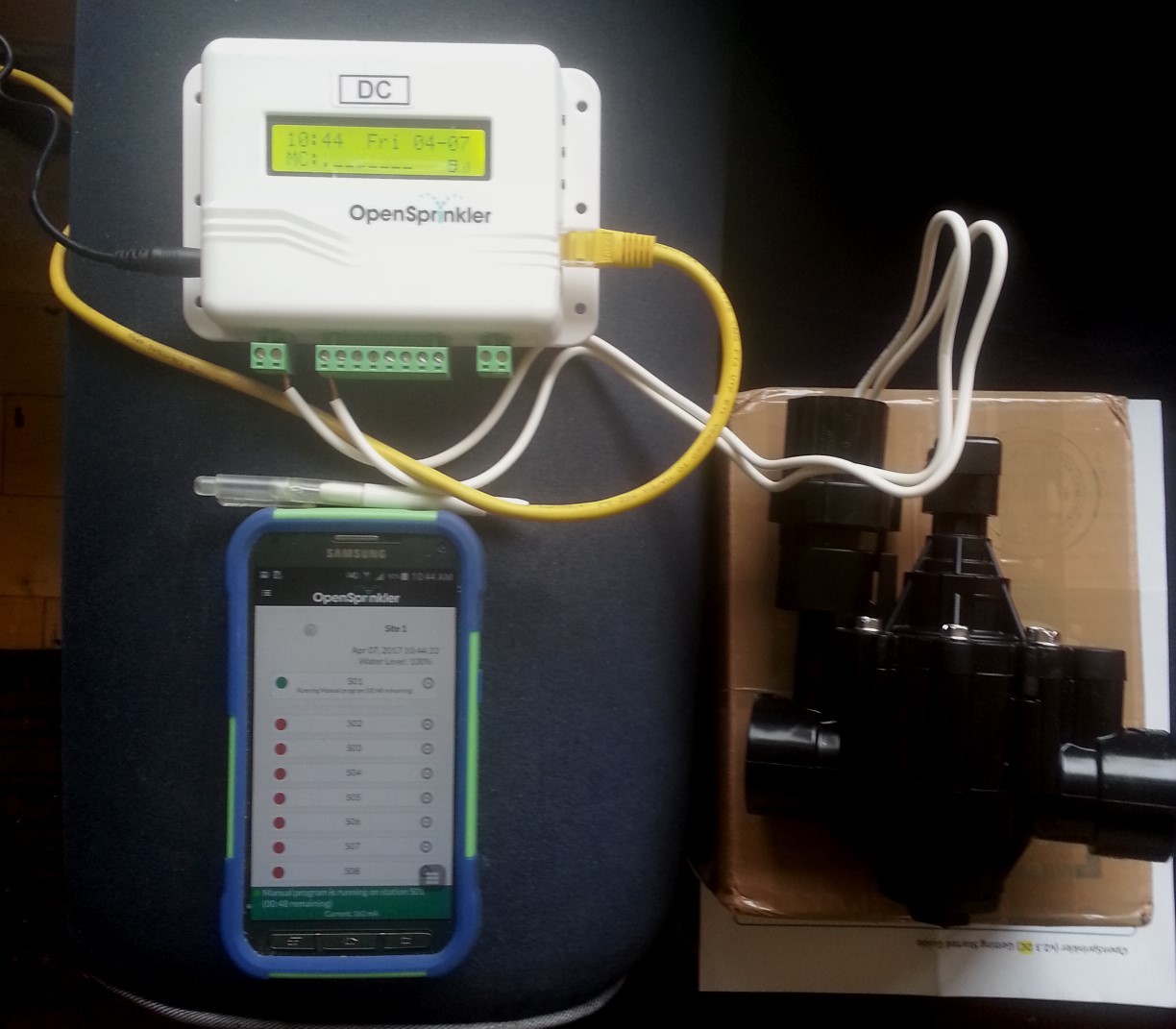Irrigation Part 2: Installation
We have water! Other than the torrential rain that's been falling, I mean. The irrigation system is now mostly set up, having taken a slightly lower priority since lack of water pretty much the opposite of our current situation. If you missed the first post, check it out here for the background. The progress this time around: water lines, pump, wiring and valves are all installed and working.
Here are a couple of electronic valves in the back field. This area is divided into two zones so that the pump only has to run half the field at a time. The valve on the right has just been triggered manually: success! The pump works, the flow and pressure are right on spec with what I calculated, and the wiring is all done.
I ended up doing all of the trenching with my two-bottom plow rather than a trencher. Since a plow works by flipping a slice of soil into a furrow left by a previous pass, it's possible to make just one pass and leave a trench behind. If a plow has more than one bottom, it flips more than one slice at a time - each slice moving one width to the right and still leaving one open furrow. So the only downside with my plan was that since I couldn't take the second plow bottom off I ended up with a bit of a mess beside the trench, but I ended up getting it all closed up in the end. It feels safer to be up on a tractor instead of on the ground with a walk behind trencher and it saved me a trip (and some rental cash). Here you can see the main line and a bunch of direct burial wiring next to it.
The main line is 1 1/4 inches, nice and big to reduce pressure losses in the long runs. Where it branches to individual valves, the short runs are 1 inch, which also matches the size of fitting that the valve uses. On the short runs to the boxes I had to finish up the trench with a shovel, but I managed to get all of the long runs done with the tractor.
Here's the pump house that holds the pump and the controller. I built it out of scraps I had lying around so it's not the prettiest but we've seen some real weather already and it seems to do the job.
At this point I've also attached all of the valve wiring (not pictured here). To help protect the wiring as is comes out of the trench, I've run the last 25 feet or so of all the wiring through some extra 1 inch water pipe, which runs directly into the pump house.
All that's left now is to assemble the risers (plumbing from the valve to fittings on the surface) and program the controller. I've held off on these last couple of steps because of the ridiculous amount of rain we've had (the last thing any of my crops need is more water at this point), but I'm satisfied that the system is working properly and it's ready to go when and if things ever start to dry out.







